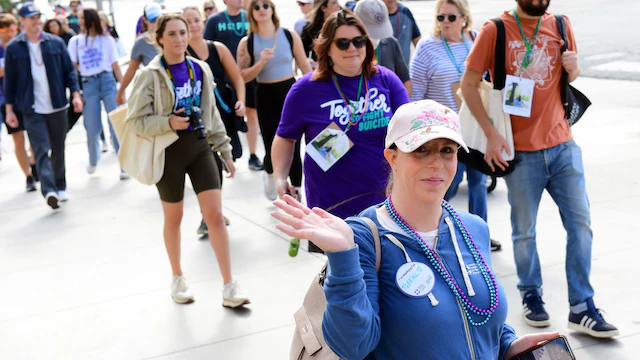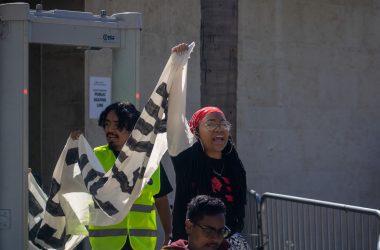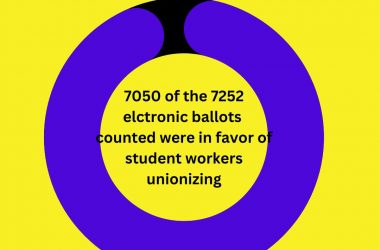By: Cheyenne Elizarraras and Buddy Casiles
Sacramento State holds an annual “Out of the Darkness” walk to tackle mental health issues and difficult topics. The events focus on engaging with the youth in the fight to prevent suicide and raise funds for suicide prevention. This walk was similar to Long Beach State’s “Take Back the Night” event in 2019.
The first Take Back the Night event in the United States began in San Francisco in 1978 as a protest against violence against women, specifically sexual assault. Since Sacramento State began their “Out of the Darkness” walks in 2011, it has continued to grow in participant size and funds.
According to the American Foundation for Suicide Prevention (AFSP), in the United States alone, an average of 132 people die by suicide every day. As younger generations become more aware of this growing statistic, the number and quality of support systems are expanding.
The AFSP started their Out of the Darkness community walks in 2004 and their goal is to save lives and bring hope to those affected by suicide while creating a culture that is smart about mental health.
The Out of the Darkness event allows participants to fundraise for AFSP during the lead-up to the walk event, encouraging people to band together in teams to come up with unique ideas to raise money.
Each walk has a theme, this year’s being “We Walk Together, We Heal Together,” and consists of a 2.5-hour walk around campus. Students, organizations, departments, faculty, staff and other community members get together to bring light to conversations about suicide prevention.
You don’t have to walk to show your support; you can volunteer at the walk, become a sponsor or spread the word.
Sacramento State surpassed its initial goal of $20,000 with $27,927 and had 1,057 participants, the county’s most registered participants for campus walks.
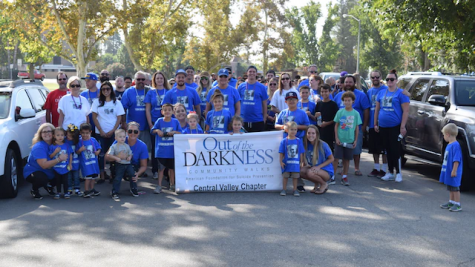
Robert Nelsen, currently retired, joined Sacramento State as president around nine years ago and has always advocated for mental health. His passion for suicide prevention stemmed from losing his son to suicide in 2001.
The director of counseling services at Sacramento State, Ronald Lutz, said the combined efforts of president Nelsen and former Vice President of Sac State Ed Mills created a lot of movement around mental health and brought attention to those issues.
“We’ve had a long association with the American Federation for Suicide Prevention for several years in a row,” Lutz said. “We’ve had the largest Out Of the Darkness walk in the country so that involved a lot of students and folks on the campus.”
The 12th annual “Out of the Darkness” walk had students sharing messages of hope and healing at Sacramento State’s WELL building as people handed out honor beads showing their connection to the cause.
They sold merchandise, interacted with therapy dogs and took pictures with props during the April 6 event.
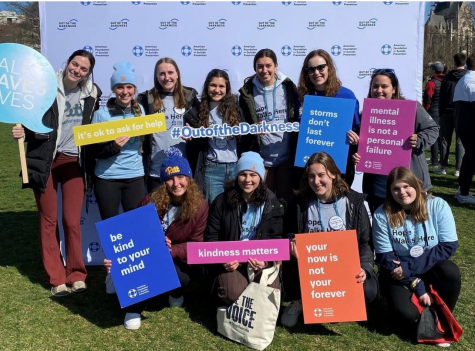
“The event creates a safe environment for our campus community to come together to openly discuss mental health and suicide,” said Ali Hopkins, health promotion specialist at Sacramento State and coordinator for the campus walks.
“Not only remember and honor those whose lives have been lost to suicide but to take action to help raise awareness surrounding the topic of mental health and suicide.”
In addition to administrative support, Sacramento State offers programs such as peer counseling, which are ways to reach out to the students. These peer health educators provide talks on wellness, stress reduction, programs on pro-health issues, alcohol use and other mental health focuses.
Lutz said students go through a 50-hour training course where they learn basic listening skills and other tools.
“We find would rather talk to a fellow student if they don’t necessarily need professional services but they just need someone to talk to,” Lutz said.
The director of counseling services encourages more counseling centers to develop a robust peer counseling program because it has paid off nicely for Sacramento.
“We can’t manage it alone, so we have to increase our capacity by relying on people in the community, peer health educators, and other people on the campus like CARES,” Lutz said. “We’ve tried to develop a lot of partnerships along campus to increase capacity.”
Serving around 31,000 students, Sacramento State is a testimony that it takes ongoing collaboration and dedicated time to make change. Overall, their multi-pronged approach has shown positive effects on the way students discuss mental health and come together to advocate for it.
Sacramento State also has physical health and wellness programs to accompany their mental health programs such as Basic Needs, Pantry, Cal Fresh, Swipe For Hunger and Housing Support.
Integrated two years ago, Crisis Assistance and Resource Education Support (CARES) case managers regularly reach out to students and assist with resources. A behavior intervention team meets every two weeks, consisting of a police chief; dean of students; CARES professionals and others, to discuss issues they’ve noticed and keep an eye on high-risk situations or students.
CSULB also has a CARES program in which a team responds to referrals to provide struggling students with information on resources they can utilize.
“The students who come in to see me or any of the other CARES case managers have been appreciative of the support they receive,” Christine Toledo, the lead case manager of the CSULB CARES team said.
“A lot of students we’ve met with say that they were not aware of all the resources available on campus or are grateful that there’s someone on campus that is willing to check in on them and offer support,” Toledo said.
Cal State Long Beach also has a Campus Assessment and Stabilization Team (CAST) that responds to crises on campus as well as both call and text crisis hotlines, which Sacramento State doesn’t have.
Not only does the growing awareness of these issues make people feel more comfortable asking for help but it also helps people understand those they love affected by mental illness. Now that awareness has increased, they may help to identify someone with some symptoms and characteristics, sometimes leading them to seek help.
By adopting some of the other schools’ practices or evolving what CSULB already has, the university can break stigmas of mental health over time and create safer environments.

